Под сенью Святого Павла: деловой мир Лондона XIV — XVI вв. - [140]
Patten J. English towns, 1500–1700. Folkestone, 1978.
Patterson C.F. Urban Patronage in Early Modern England. Corporate Boroughs, the Landed Elite, and the Crown, 1580–1640. Stanford, California, 1999.
Payling S.J. Social Mobility, Demographic Change, and Landed Society in Late Medieval England // Economic History Review. 1992. № XLV. P. 51–73.
Perring D. Roman London. L., 1991.
Phythian-Adams Ch. Re-Thinking English Local History. Leicester, 1991.
Picard L. Elizabeth's London: Everyday Life in Elizabethan London. L., 2004.
Piatt С. The English Medieval Town. L.;Toronto;Sydney;N.Y., 1979.
Porter R. Disease, Medicine and Society in England, 1550–1860. Cambridge, 1993.
Power A. The Wool Trade in the Fifteenth Century // Studies in English Trade in the Fifteenth Century. N.Y., 1933. P. 39–90.
Prestwich M. Plantagenet England, 1225–1360 (New Oxford History of England). Oxford, 2005.
Rabb Т.К. Enterprise and Empire: Merchant and Gentry Investment in the Expansion of England, 1575–1630. Cambridge, 1967.
Ramsey P. Tudor Economic Problems. L., 1966.
Rappaport S. Worlds Within Worlds: Structures of Life in Sixteenth Century London. Cambridge, 1989.
Rawcliffe С Margaret Stodeye, Lady Philipot (d. 1431) // Medieval London Widows, 1300–1500 / Ed. by CM. Barron and A.F. Sutton. L., 1994. P. 85–98.
Reynolds S. An Introduction to the History of English Medieval Towns. Oxford, 1977.
Richardson J. The Annals of London. A Yearby-year Record of a Thousand Years of History. Berkley;Los Angeles, 2000.
Rigby S.H. English Society in the Later Middle Ages. Class, Status and Gender. L., 1995.
Rogers C.D., Smith J.H. Local Family History in England, 1538–1914. Manchester;N.Y, 1991.
Rowley T. The High Middle Ages. 1200–1550. L.;N.Y, 1986.
Russell J. Medieval Regions and their Cities. L., 1972.
Russell J. London. N.Y., 1994. Sheppard F. London. A History. Oxford, 1998.
Smith A. Dictionary of City of London street names. N.Y., 1970.
Smith S. Underground London. Travels Beneaft the City Streets. L., 2004.
Staples K.J. Daughters of London: Inheritance Practice in the Late Middle Ages. Ph.D. diss. University of Minnesota, 2006.
Stone L. The Family, Sex and Marriage in England 1500–1800. L., 1990.
Sutton A.F. The Mercery of London: Trade, Goods, and People, 1130–1578. Aldershot, 2005.
Swanson H. Medieval British Towns. N.Y, 1999. The English Medieval Town. A Reader in English Urban History 1200–1540 / Ed. by R. Holt and G. Rosser. L.;N.Y, 1990.
The Fifteenth Century: Revolution and Consumption in Late Medieval England / Ed. by M. Hicks. Woodbridge, 2001.
The London Encyclopeadia / Ed. by B. Weinreb and Ch. Hibbert. L., 1984.
The Oxford Companion to Local and Family History / Ed. by D. Hey. Oxford, 2002.
Thomson J.A.F. The Transformation of Medieval England. 1370–1529. N.Y, 1983.
Thrupp S. The Merchant Class of the Medieval London (1300–1500). Chicago, 1948.
Tucker P. Law Courts and Lawyers in the City of London, 1300–1550. Cambridge, 2007.
Unwin G. The Guild and Companies of London. L., 1925.
Valerie Emanoil M.A. “In My Pure Widowhood”: Widows and Property in Late Medieval London: Ph.D. diss. The Ohio State University, 2008.
Veal EM. The English Fur Trade in die Later Middle Ages. Oxford, 1966.
Ward J. Women in England in the Middle Ages. L., 2006.
Warnicke R.M. William Lambarde. Elizabethan Antiquary, 1536–1601. L.;Chichester, 1973.
Williams G.A. Medieval London. From Commune to Capital. N.Y., 2007.
Wrightson К English Society 1580–1680. L., 1982.
Wysocki D.K. Readings in Social Research Methods. Wadsworth, 2004.
Summary
Using a wide range of various sources (legislative, private legal, and narrative) the author of the monograph investigates business world of London of the 14>th — 16>th centuries which can be seen from three main angles. These are society and power, economic activity, private life and values. The author shows that in the 14>th — 16>th centuries London and its business world were the most mature clearly reflecting the leading tendencies in town life development of the transitional period from the Middle Ages to the Modern Time.
A complex of various types of activities: trade, lending operations, crown financing, production and entrepreneurship, investment into real estate in towns and counts of England, and participation in the political life and governance of London was a sign of belonging to a business community. Such a diversity of activities was typical of the majority of men of business, especially aldermen who made not only the richest and the most commercially active part of society but also formed the ruling elite of the city.
Formation of London's alderman institution took place together with the development of the city and establishment of its main social and political functions by the beginning of the 13>th century. It was by that time that London had become a generally recognized leading economic center, an official capital of the kingdom and had acquired the status of the most privileged city of England.
According to the town law aldermen election criteria were the following. First of all, it was being a part of the community of freemen, rightful townspeople, who, besides other privileges, had the right to participate in elections of the town's officials and formation of the town's local authority. They were also obliged to be members of one of the Great Twelve Livery Companies of London — merchants of luxury goods, ready-made clothes, ironmongers, wine merchants, traders of salt, spice merchants, wool and cloth merchants, grocers, fishmongers, jewelers, and fur traders. It is important to note that aldermen were included in the limited but richest and the most influential part of the company — the top of the livery. In fact, the position of the alderman was in the hands of the richest merchants. Thirdly, for being elected an alderman there was a certain property qualification in 1000 pounds “in goods and loans” in the 14
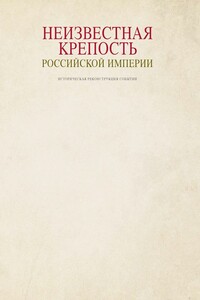
Книга рассказывает об истории строительства Гродненской крепости и той важной роли, которую она сыграла в период Первой мировой войны. Данное издание представляет интерес как для специалистов в области военной истории и фортификационного строительства, так и для широкого круга читателей.
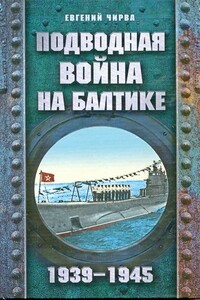
Боевая работа советских подводников в годы Второй мировой войны до сих пор остается одной из самых спорных и мифологизированных страниц отечественной истории. Если прежде, при советской власти, подводных асов Красного флота превозносили до небес, приписывая им невероятные подвиги и огромный урон, нанесенный противнику, то в последние два десятилетия парадные советские мифы сменились грязными антисоветскими, причем подводников ославили едва ли не больше всех: дескать, никаких подвигов они не совершали, практически всю войну простояли на базах, а на охоту вышли лишь в последние месяцы боевых действий, предпочитая топить корабли с беженцами… Данная книга не имеет ничего общего с идеологическими дрязгами и дешевой пропагандой.
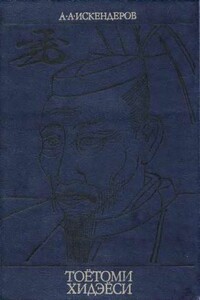
Автор монографии — член-корреспондент АН СССР, заслуженный деятель науки РСФСР. В книге рассказывается о главных событиях и фактах японской истории второй половины XVI века, имевших значение переломных для этой страны. Автор прослеживает основные этапы жизни и деятельности правителя и выдающегося полководца средневековой Японии Тоётоми Хидэёси, анализирует сложный и противоречивый характер этой незаурядной личности, его взаимоотношения с окружающими, причины его побед и поражений. Книга повествует о феодальных войнах и народных движениях, рисует политические портреты крупнейших исторических личностей той эпохи, описывает нравы и обычаи японцев того времени.

В книге рассказывается история главного героя, который сталкивается с различными проблемами и препятствиями на протяжении всего своего путешествия. По пути он встречает множество второстепенных персонажей, которые играют важные роли в истории. Благодаря опыту главного героя книга исследует такие темы, как любовь, потеря, надежда и стойкость. По мере того, как главный герой преодолевает свои трудности, он усваивает ценные уроки жизни и растет как личность.
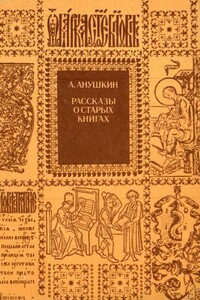
Имя автора «Рассказы о старых книгах» давно знакомо книговедам и книголюбам страны. У многих библиофилов хранятся в альбомах и папках многочисленные вырезки статей из журналов и газет, в которых А. И. Анушкин рассказывал о редких изданиях, о неожиданных находках в течение своего многолетнего путешествия по просторам страны Библиофилии. А у немногих счастливцев стоит на книжной полке рядом с работами Шилова, Мартынова, Беркова, Смирнова-Сокольского, Уткова, Осетрова, Ласунского и небольшая книжечка Анушкина, выпущенная впервые шесть лет тому назад симферопольским издательством «Таврия».
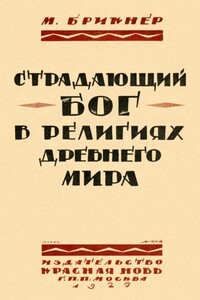
В интересной книге М. Брикнера собраны краткие сведения об умирающем и воскресающем спасителе в восточных религиях (Вавилон, Финикия, М. Азия, Греция, Египет, Персия). Брикнер выясняет отношение восточных религий к христианству, проводит аналогии между древними религиями и христианством. Из данных взятых им из истории религий, Брикнер делает соответствующие выводы, что понятие умирающего и воскресающего мессии существовало в восточных религиях задолго до возникновения христианства.